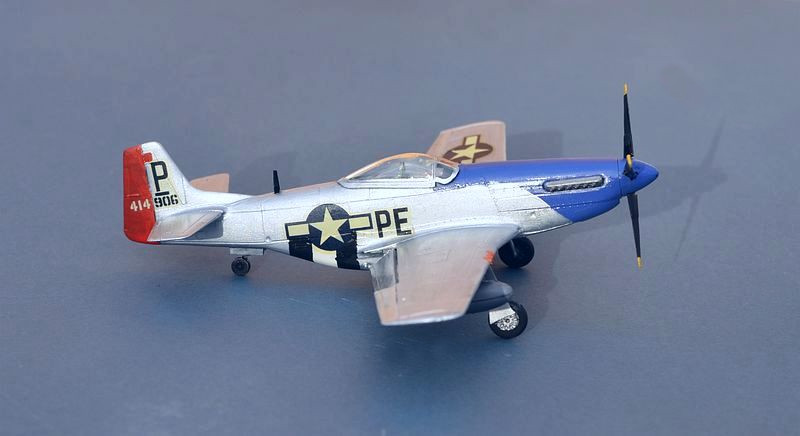Friends & Allies Part 2c - USAF and US Army Air Forces
Main Index




The first B-29 to enter the Pacific Theatre in World War II was given the name "Joltin
Josie, the Pacific Pioneer".
Josie arrived in the Marianas on the 12th of October, 1944 with General Haywood S.
Hansell in the pilot seat and Major Jack Catton - the aircraft commander - in the
co-pilot's position. Hansell headed the XXI Bomber Command. Catton was a flight leader
of the 873rd squadron in the 498th Bomb Group. The 497th, 498th, 399th and the 500th
Bomb Groups and their associated organization made up the 73rd Bomb Wing.
After some 400 hours flying and 24 missions over Japan, during which Josie never
suffered an abort and always hit the primary target, Major Catton was transferred
to General LeMay's Headquarters. Captain Wilson C. Currier took over as aircraft
commander.
Josie was lost on the first mission following Major Catton's departure. Immediately
after taking off on 1 April 1945, she crashed into Magicienne Bay (also known as
Laulau Bay) and exploded on impact. There were no survivors.
The Airfix B-29 kit is a bit of a handful, with difficult fit in some areas. Nevertheless,
it remains an enjoyable, if sometimes challenging build.
Link to build page

Boeing B-29A Superfortress, 498th Bomb Group, 873rd Squadron.
Saipan, Marianna Islands, November 1944
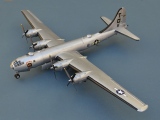
Lockheed F-104C Starfighter - 479 TFW, Vietnam, 1965.
I find the Starfighter a particularly good looking aircraft, particularly in bare
metal finish; far more futuristic looking than any of its contemporaries. ESCI's
superb kit is available in several versions (covering the F-104C, G and S) and has
recently been re-issued by Italeri.
Decals are largely out the box, although several of the larger letters disintegrated
during application (a problem I have encountered with many older ESCI kits) so were
replaced 1 for 1 with spares (ex-Airfix I think). Link to build page

The F-104 was another contemporary of the Lightning. Although this is a US version,
its main users were non US, including many NATO Nations. Lockheed's efforts to sell
the Starfighter to NATO in the "deal of the century" were engulfed in scandal and
corruption, with a member of at least one European Royal Family being shown to have
accepted large bribes to promote its purchase.

The Starfighter had a poor safety record and was very demanding to fly. License built
and improved versions were produced by Canadair, Mitsubishi, Fiat (Aeritalia) and
a consortium of european companies, including MBB, Messerschmitt, Fiat, Fokker and
SABCA.



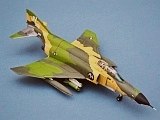

Republic F-105D Thunderchief - 357 TFS, 355 TFW, Vietnam, 1970.
Developed from the F-84 Thunderstreak, which in turn owes its heritage to Republic’s
Thunderjet and Thunderbolt, the F-105 Thunderchief entered service in 1958 as a
fast (Mach 2) nuclear pentrator, in effect a one-shot weapon for a short “total war”
against the Soviet Union.
However it quickly found itself fighting a very different and limited conventional
war, one of attrition and restricted engagements against North Vietnam. Thunderchiefs
bore the brunt of the early bombing campaigns, flying from bases in Thailand to
attack North Vietnamese targets, including Hanoi with its infamous SAM alley. In
the conventional role, theF-105 could carry a greater load than a WW2 B-24 or B-17
and over 20,000 combat sorties were flown, with 320 aircraft lost in combat.
In view of the high level of attrition, the result of their intense use, rather than
any fault in aircraft or pilots, F-105s began to be replaced in the bombing role
by F-4s in 1970.
Although not intended as fighters, USAF F-105s were also credited with 27.5 MiG kills
over Vietnam. Link to build page
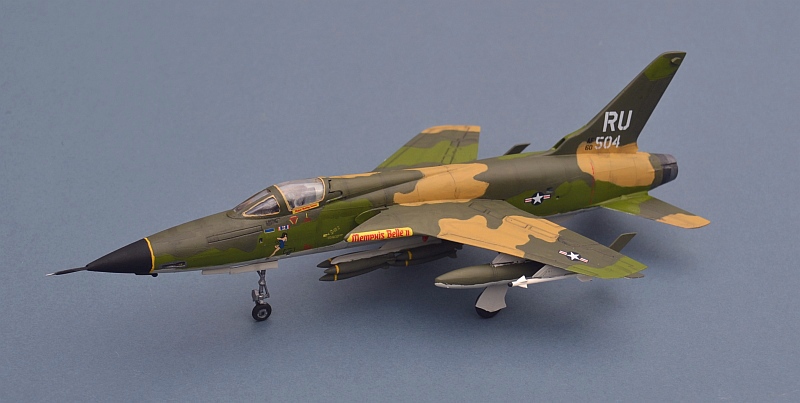

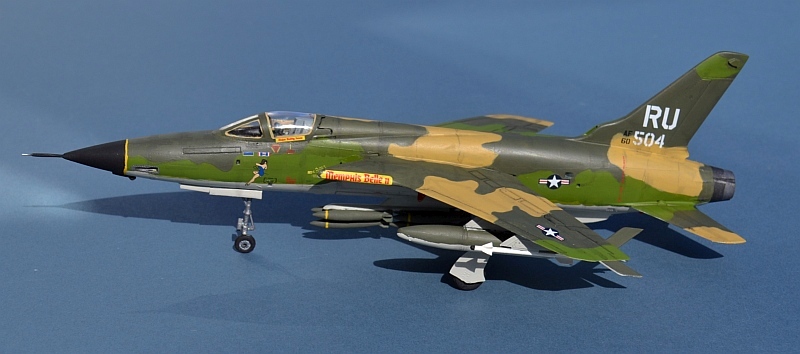
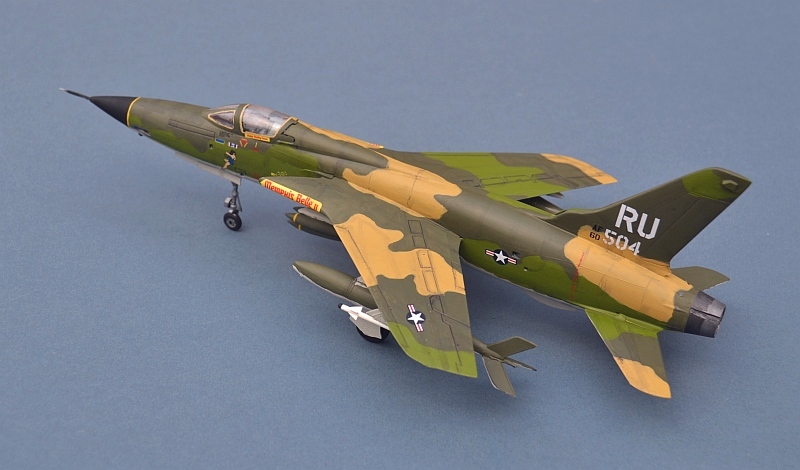
McDonnell Douglas F-14E Phantom II - 469 TFS, 388 TFW, Vietnam, 1970.
For many people, the F-4 Phantom was the ultimate Western Cold War fighter. Like
the British Buccaneer and the present day Hornet, it was originally designed as
a multi-role naval fighter, but became the key equipment of many land-based air forces
(and Navies) around the world.
With its angular shape and massive weapons load, it was a very distinctive aircraft,
equally at home as an interceptor, dogfighter or bomber. The F-4E variant was developed
from the earlier USAF F-4C and D and drew heavily on Vietnam combat experience, with
the F-4D introducing the navy’s Sidewinder missile to the Air Force in place of the
less effective USAF Falcon, and incorporating an internal M61 Vulcan cannon in the
nose for dogfighting.
The F-4E was first deployed to Vietnam in 1968, where it began to replace the F-105
in the bombing role and as the primary Air Superiority fighter.
Link to build page Link to Phantoms Pages
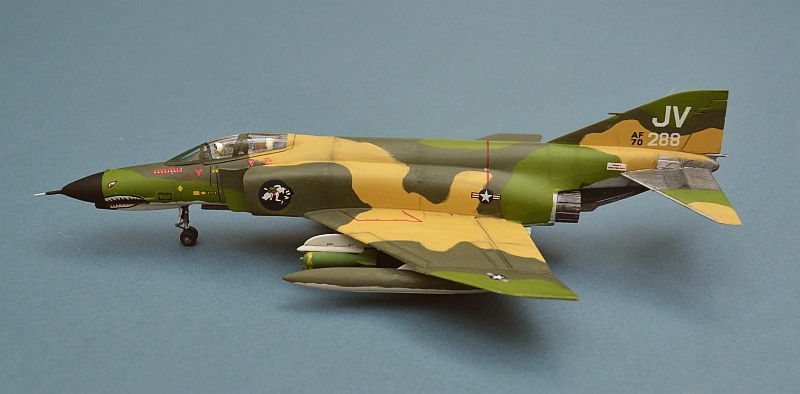


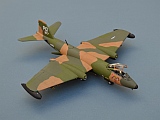
Martin B-57B Canberra - 8th Bomb Sqn (Tactical) USAF, Vietnam, 1969.
Developed from the British Canberra light bomber, the B-57 became the first USAF
jet aircraft to bomb North Vietnam. Its long range and loiter capability with a very
heavy bomb load were ideal for night interdiction missions on the Ho Chi Minh Trail
in the attempt to stop the transfer of supplies to the Viet Cong through Laos and
Cambodia into South Vietnam.
The Eighth and Thirteenth Tactical Bomb Squadrons (8TBS, 13TBS) from Clark Air Base,
Philippines launched their first missions in 1965 from Bien Hoa air base, moving
to Da Nang Air Base near the DMZ. Their final base was Phan Rang (Happy Valley) where
the 8TBS, as the oldest continuously operating bomb squadron in the Air Force (World
War I), continued their interdictor missions until 1969. Link to build page




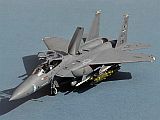
Boeing F-15E Strike Eagle 48th Fighter Wing, USAFE, RAF Lakenheath 2018.
The McDonnell Douglas (now Boeing) F-15 Eagle entered service with the USAF in 1976.
Designed originally as a pure air superiority fighter, it ranks amongst the most
successful of modern fighters, with (currently) 104 air to air kills for zero losses.
Designed to overcome the shortfalls demonstrated by F-4s over Vietnam, the Eagle
emphasised speed and agility, with a large powerful radar providing look down/shoot
down capability for operations at height over cluttered land surfaces. A wide flat
fuselage provides its own substantial lift, to the extent that an Israeli F-15 lonce
anded safely after losing an entire wing in an air to air collision.
The F-15E Strike Eagle is a 2-seat ground attack development of the F-15, fitted
with conformal fuel tanks to add range as well as adding 6 new weapons stations on
the tanks themselves. Developed as a private venture to replace the F-111 and ground
attack F-4s, the Strike Eagle first flew in 1986, with initial deliveries to the
USAF in 1988. Its rear fuselage has been modified to accommodate larger and more
powerful engines, Since 2010, in-service aircraft have been upgraded with an active
electronically scanned radar array (AESA) that melds the radar transceiver of the
F-18 Hornet with the large AESA antenna fitted to the fighter variant F-15C. External
pods below the fuselage provide Forward Looking Infra Red (FLIR) and visual targeting/designation
capabilities. Since 2004 some avionics and airframe assemblies have been manufactured
in Korea, reflecting the wide use of the F-15E by the Korean Air Force.
The USAF 48th Fighter Wing operates the F-15E Strike Eagle out of RAF Lakenheath
in the United Kingdom. Named “The Liberty Wing” after its previous base in Chaumont,
France where the Statue of Liberty was originally built, it has operated the F-15E
since 1992 and currently consists of the 492nd Fighter Sqn (F-15E), 493rd FS (F-15C),
494th FS (F-15E) and a new squadron, the 495th operating the F-35A.. Link to build
page
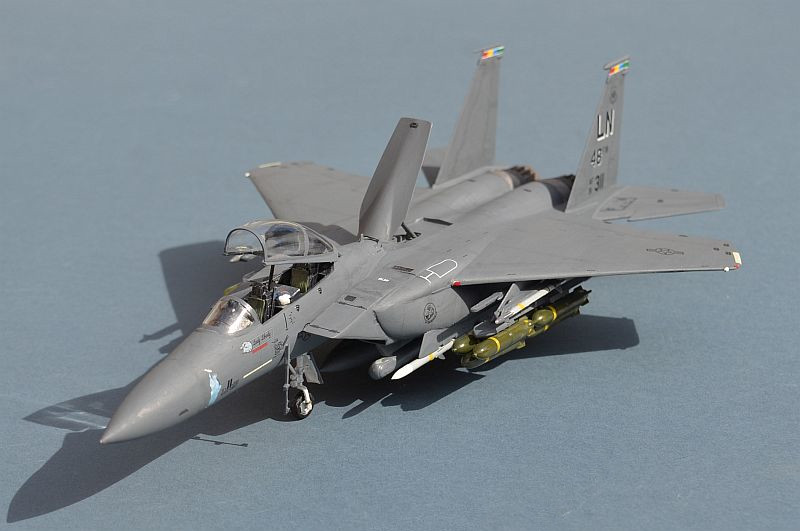

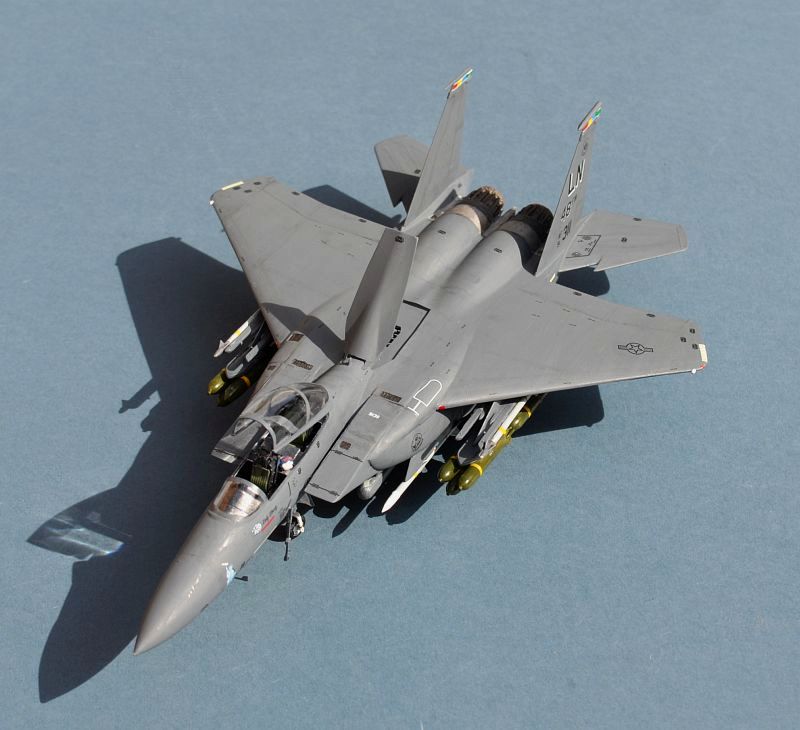
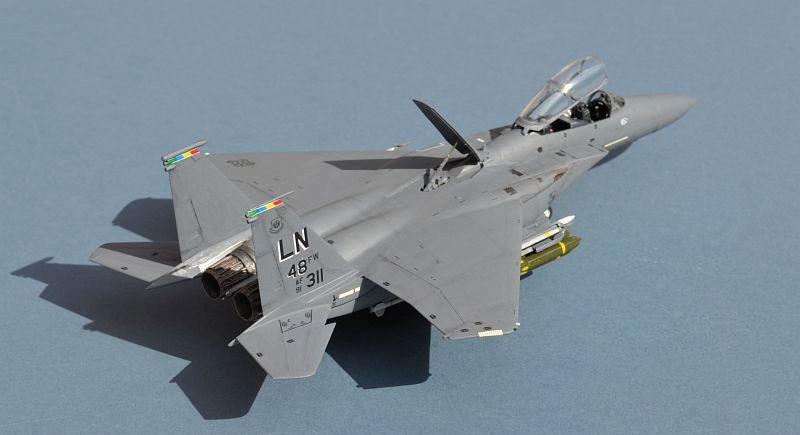 Main Index
Main Index

This is the 1974 Airfix kit, which can still hold its own with more recent issues.
Link to build page
North American P-51D Mustang, 352nd Fighter Group.
RAF Bodney, Norfolk, 1944.

The Mustang started life when the British Purchasing Commission tried to persuade
North American to build P-40s for Britain under licence. North American's response
was to propose their own design, a modern fighter aircraft that would match the performance
of European designs. Fortunately, the commission was willing to take the risk, and
North American delivered.
Attracting the interest (and financial support) of the US Army for their own Air
Forces, the aircraft was eventually fitted with US licence-built British Rolls Royce
Merlin engines to become the excellent P-51D Mustang.
Although not the most manoeuvrable fighter available (e.g. the Bf-109 could easily
out-turn it), and suffering some potentially dangerous aerodynamic quirks from its
laminar flow wing, the Mustang's enormous 1,650 mile+ range placed it far beyond
any other aircraft, allowing bomber sorties over central Europe to be escorted by
fighters for the entire trip.
